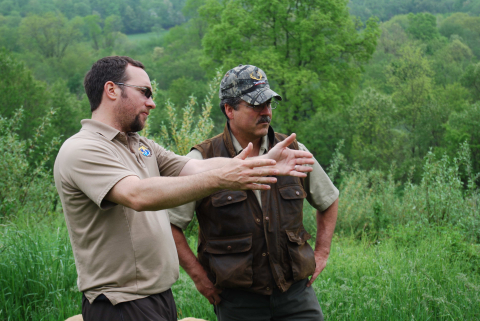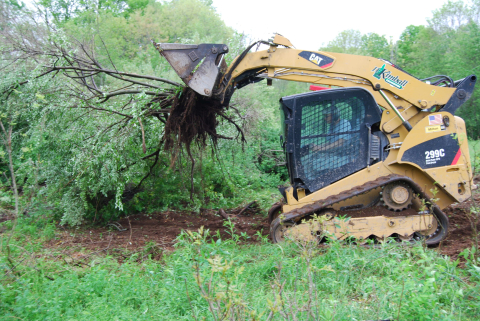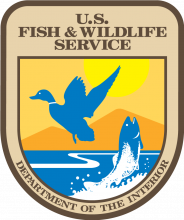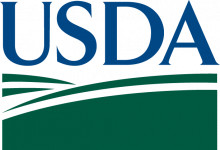Private Landowner Project
Starting in 2012, Tom McAvoy has gradually shifted the balance between nonnative shrubs infesting old fields on his 115-acre property, to native shrubs that offer equally thick hiding cover and better food for local wildlife.
A Rare Rabbit Got Things Rolling
After biologists with Connecticut’s Department of Energy and Environmental Protection found New England cottontails on his property, McAvoy decided to help those rare native rabbits by improving their habitat. The U.S. Fish and Wildlife Service’s popular Partners for Fish and Wildlife program helped fund the initial restoration work.
Tracked machines removed invasive autumn olive, bush honeysuckle, and multiflora rose. In their place were planted mulberry, chokeberry, dogwood, and other native shrubs. McAvoy also harvested 8 acres of timber in his 18-acre woodlot. All along, he learned how habitat management designed to boost one kind of wildlife can help many others.
Soon, McAvoy began seeing “good numbers of deer and wild turkeys,” along with songbirds, hawks, and other birds. “It seems there are rabbits everywhere,” McAvoy says. “I saw a big bobcat walk across the road toward the area where we harvested timber to make that stand of young forest.
“Predators like bobcats are part of the system, too. The rabbits are important food for predators. If the habitat is good, the cottontails can mostly avoid the predators.”
A Legacy Project
McAvoy has had a career as a banker and estate planner. He’s a lifelong outdoorsman and hunter, and his three sons have followed in his footsteps. He lives in a restored 1760 farmhouse on his land.
His property – aptly renamed Cottontail Farm – continues to become a better place for wildlife. “It makes you feel good to be able to help the rabbits,” McAvoy says, “especially when you know that so many other kinds of wildlife need the same habitat. I look at this as a legacy project, one that my sons will be part of in the future.”
The Rabbits Respond
Since 2008, biologists have radio-collared and monitored New England cottontails on McAvoy’s farm and on several nearby properties, studying their home ranges, habitat preferences, and how long individuals survive in the wild. Rabbits live-trapped on Cottontail Farm have been sent to Roger Williams Park Zoo in Rhode Island to become part of the conservation breeding effort to help save New England’s native cottontail.
Ted Kendziora is the Partners for Fish and Wildlife biologist who initially helped McAvoy plan a series of habitat management projects. Soil conservationist William Purcell with the USDA Natural Resources Conservation Service (NRCS) has helped with technical support, and NRCS has contributed ongoing funding.
The changes on Cottontail Farm inspired McAvoy to give presentations on the importance of private landowners making their land more attractive to wildlife. He is now director and vice-chair of Partnerscapes, a national nonprofit landowner-led group that connects private landowners to partner organizations and agencies, helping sustain working lands for people, wildlife, and natural resources through voluntary conservation actions.
The U.S. Fish and Wildlife Service tells Tom McAvoy’s story in greater detail.






